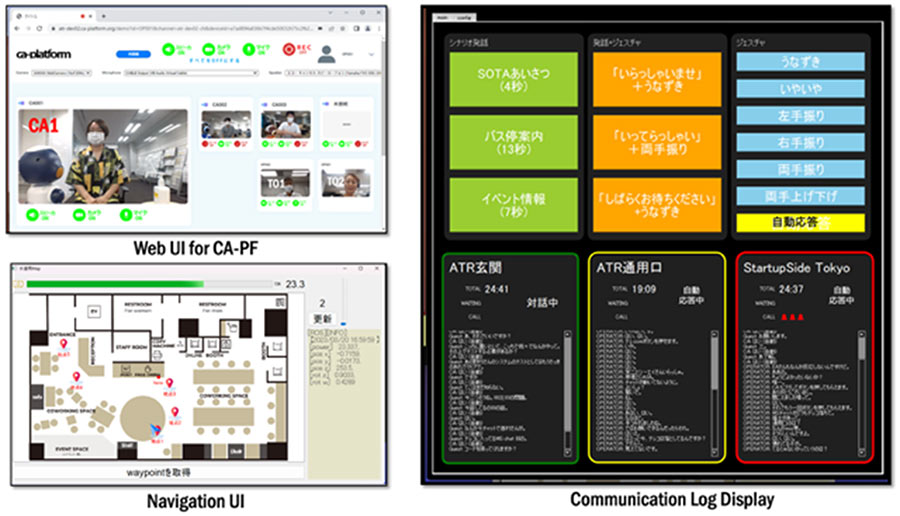Progress Report
The Realization of an Avatar-Symbiotic Society where Everyone can Perform Active Roles without Constraint5. Development of CA platform
Progress until FY2022
1. Outline of the project
We are developing a software platform for cybernetic avatars (CAs) called the CA platform (CA-PF), which connects multiple CAs and tele-operators, enabling CAs to provide services. To achieve the CA-PF, we first need to clarify the hierarchical structure of the platform, realize the functions of each hierarchy, and define the protocols between the layers. The basic structure comprises a CA monitoring layer, a CA experience management layer, a hierarchical CA control layer, and a tele-operator assignment layer. We are developing a CA-PF prototype based on this basic structure, conducting field experiments to verify its performance, and exploring new research topics for the platform. In collaboration with members of R&D theme 7 (field experiments in the real world) and a corporate consortium associated with the project, we will develop a CA-PF that considers interoperability and scalability of various types of CA services and CA models through field experiments.

2. Outcome so far
- Development of CA-PF and Field Experiments
We examined the practical requirements for utilizing CA and CA-PF in a real-world setting and developed a second prototype of CA-PF, which builds upon the specifications of the initial prototype developed last year. The objective was to improve the connectivity between CA-PF, CAs, and tele-operator PCs, as well as enhance the Web user interface. Through experiments, it was demonstrated that tele-operators were able to control the CAs using the second prototype, even in a mobile environment where they utilized smartphones or notebook PCs with mobile WIFI devices. In the second prototype, we proposed and implemented software modules as "external programs" to enable semi-autonomous control of CAs, along with a switching manager that facilitates the transition between tele-operation and autonomous operation.

These implementations were validated through reception and guidance field experiments at corporate entrances, as well as multi-location reception field experiments conducted at three incubation offices (Tokyo, Kyoto, and Osaka). These experiments were conducted in collaboration with the research groups of R&D theme 1 (Development of CAs with a humanlike presence and lifelikeness) and theme 7 (Field experiments in the real world). They demonstrated the feasibility of providing simulated CA services.
- Standardization of CA Service Function Description
The specifications that describe CA service functions were incorporated into RoSO (Robotic Service Ontology), which is currently undergoing standardization by the Object Management Group's (OMG) Robotics DTF, an international standardization body. The initial draft of RoSO 1.0 was submitted in September 2022. Similarly, the specifications for the CA platform were integrated as an extension of RoIS (Robotic Interaction Service), which is also undergoing standardization within OMG's Robotics DTF. The issuance of the RoIS 2.0 RFP (request for proposal) took place in March 2023.
3. Future plans
The CA-PF is designed to be utilized in various scenarios that involve combinations of CA types, tele-operator environments, CA service provision location situations, and types of CA services. We will progressively develop the CA-PF to support these scenarios and conduct functional verification experiments accordingly. Furthermore, we will expand the sample implementation of the external programs proposed as a framework for integrating the outcomes of other R&D themes.